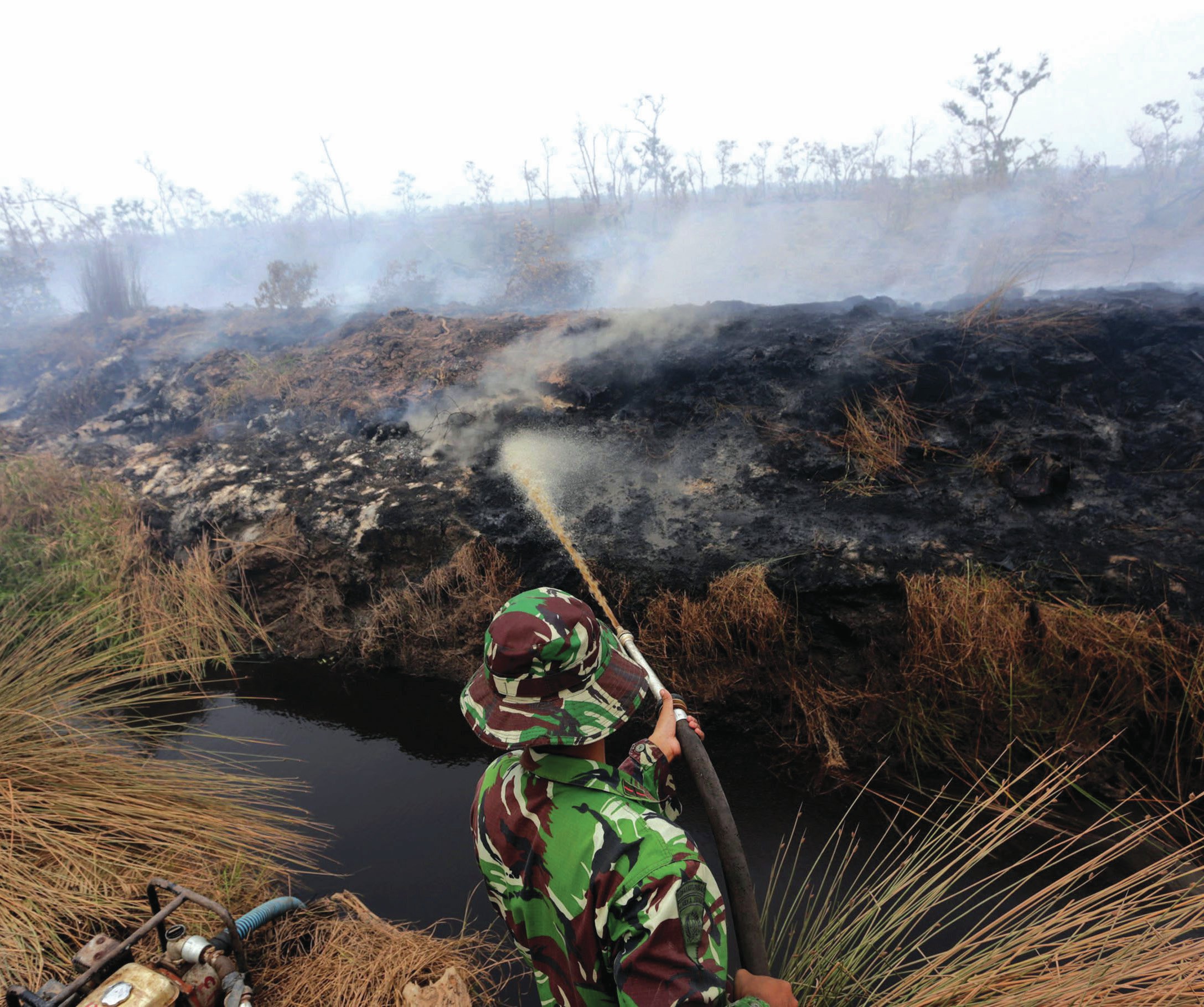
If you have spent any time in the uplands of Britain then you are probably familiar with peat — the wet, squidgy soil that sinks underfoot and can give you a boot full of cold, dark brown water. Consisting of partly decomposed organic material, derived almost entirely from plant remains, peat is distributed widely in the cool, humid, northern regions of the world, particularly in Canada, the UK, the countries bordering the Baltic and further east into Russia and northern Asia. But organicrich peat soils can also be found in some parts of the humid tropics. Here, rather than being derived from mosses, sedges and grasses, the peat is mostly composed of the remains of rainforest trees (roots, branches, leaves and even whole trunks).
Landscapes that have accumulated layers of peat on the land surface are referred to as peatlands and they often cover many tens or hundreds of square kilometres with thicknesses of up to 5 or even 10 metres. Since peat has a high carbon content (typically between 40% and 60%), peatlands are a globally important carbon store. Together, they may only cover some 3% of the Earth’s land surface, but their deep organic layers mean that they contain a vast and concentrated store of carbon, estimated at between 500 and 700 billion tonnes. This carbon store is so large that it probably equals or exceeds that contained in the world’s vegetation (500 billion tonnes) and is approaching the size of the atmospheric carbon store (750 billion tonnes).
Your organisation does not have access to this article.
Sign up today to give your students the edge they need to achieve their best grades with subject expertise
Subscribe




